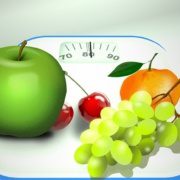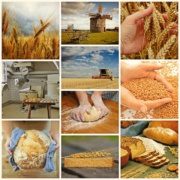Managing Endometriosis Through Diet: Exploring Recommended Dietary Approaches
As the new year begins and the bikini season approaches, many people seek diets to achieve their health goals. However, when it comes to endometriosis, what dietary approaches are advisable? In this article, we delve into the compatibility of endometriosis and five well-known diets, providing insights into how they may or may not align with managing this condition.
The Atkins Diet and the Keto Diet
Robert Atkins, known for the Atkins Diet, can also be considered a pioneer in the “keto diet” movement. Both diets share a fundamental principle: the significant reduction of carbohydrates to the point where the body relies on fat for energy. In keto and Atkins diets, carbohydrate intake is typically limited to around 20g daily. To put this into perspective, a balanced diet with a mix of foods usually contains between 240 to 300g of complex carbohydrates daily.
To fulfill daily energy needs, these diets prioritize protein and fat consumption. Atkins recommends foods like meat and eggs, primarily leading to the intake of animal fats. However, this can have several adverse effects. Notably, it can lead to unfavorable cholesterol levels, increasing the risk of cardiovascular disease. Additionally, it lacks fiber, which can result in digestive problems and other complications. This dietary approach is notably one-sided and poses health risks, such as potential kidney damage due to excessive protein consumption.
Particularly concerning endometriosis, diets rich in red meat can exacerbate symptoms like pain and inflammation. Even for individuals without endometriosis, these diets come with many health risks. Therefore, it is generally advisable for people, regardless of their health status, to avoid such diets due to their numerous potential health hazards.
EHD (The “Eat Half Diet”)
At first glance, the concept seems straightforward – eat half and watch the pounds melt away! When we apply this “EHD rule” exclusively to unhealthy foods like animal fats, sugar, alcohol, fast food, processed foods, and red meat, it can indeed be a positive step toward a healthier diet. However, in most cases, EHD refers to portion control, aiming for a smaller or half-sized portion of each meal. While this may reduce calorie intake by up to 50%, it also slashes nutrient intake by the same percentage. This approach can potentially lead to malnutrition or nutritional deficiencies.
Maintaining a healthy and balanced diet is of utmost importance for individuals dealing with endometriosis. Nutrients like vitamins, minerals, trace elements, omega-3 fatty acids, and phytochemicals found in whole grains, nuts, fruits, vegetables, and certain types of fish can help alleviate pain and reduce inflammation. With EHD, however, one consumes only half of these health-promoting foods, which is counterproductive.
In conclusion, EHD does not make sense whether you have endometriosis or are generally healthy, as it may result in malnutrition or nutritional deficiencies.
Therapeutic Fasting
Therapeutic fasting, established by the German physician Otto Buchinger in 1935, is a dietary approach that involves a strict and voluntary abstention from all solid foods. Instead, individuals can consume vegetable broth, fruit, vegetable juices, and honey, which should not exceed 500 calories daily. In this context,” fasting” does not relate to healing but involves severe calorie restriction. However, therapeutic fasting has raised concerns from a health perspective. This approach provides the body with significantly fewer calories and nutrients than it requires for its essential functions. As a result, the body enters a state where it starts breaking down its tissues to meet its energy needs, essentially cannibalizing itself for survival. This can lead to various health risks, including potential damage to the heart muscle since it contains structural proteins that can be broken down during periods of starvation.
Moreover, therapeutic fasting can be especially risky for individuals with pre-existing health conditions, such as endometriosis. Extreme dietary approaches can be counterproductive for those with medical conditions and potentially exacerbate their health issues.
It is crucial for individuals considering therapeutic fasting or any extreme dietary regimen to consult a healthcare professional or registered dietitian to evaluate the potential risks and benefits and to ensure it aligns with their specific health needs and goals. Fasting or restrictive diets should only be pursued under proper medical supervision when deemed safe and appropriate.
The Myth of ‘Magic’ Cabbage Soup and Other Crash Diets
The “cabbage soup” diet and its variations, including the “pineapple diet,” claim that certain fiber-rich foods like cabbage and pineapple have “negative calories,” meaning they supposedly burn more energy during digestion than they provide, leading to weight loss.
However, this concept is far from reality. Cabbage soup and pineapple do not possess “negative calories;” this notion is a myth. Sustainable weight loss occurs by altering eating habits and reducing calorie intake. After all, who wants to consume such excessive amounts of cabbage soup daily that it contributes to weight gain?
Crash diets, such as these, heavily rely on drastically reducing calorie intake, promising rapid weight loss. Unfortunately, this weight loss primarily comprises water and the body’s proteins, including muscle mass. Similar to therapeutic fasting and other extreme diets, these approaches can lead to the breakdown of healthy bodily tissues. Furthermore, they often result in malnutrition due to their minimal and unbalanced food selections.
The Low-Carb Approach
Low-carb diets represent a further evolution of dietary strategies like Atkins and keto diets. They all build on ketosis, where the body taps into its fat stores for energy when carbohydrate intake is reduced. However, it is crucial to strike a balance by ensuring an adequate protein intake to prevent the body from breaking down its protein structures. Furthermore, it is essential to avoid malnutrition by guaranteeing a sufficient supply of vitamins and other nutrients. It is important to note that the success of this process depends on adhering to a “no carb” rather than merely a “low-carb” meal plan, which can be challenging for non-professionals. For instance, many may not be aware that foods like carrots or tomatoes contain carbohydrates, and the glycemic index plays a significant role beyond just the nutritional content on paper.
When executed consistently under professional guidance and supervision, a low-carb diet can be a healthy weight-loss method, particularly for individuals with type 2 diabetes. Nevertheless, because this dietary approach carries potential health risks, including the possibility of heart muscle damage, it should never be undertaken without accompanying and closely monitored nutritional counseling.
Of course, there is a multitude of diet trends in the market, such as the “Brigitte diet,” “Paleo diet,” “Detox diet,” and many others. It seems like every year brings a new diet with only one primary aim: profitability. However, when it comes to managing endometriosis, the key is a healthy and well-rounded diet.
Achieving and maintaining long-term weight reduction safely should ideally be guided by a reputable nutritionist or dietitian. They can provide expert advice on how the right dietary choices may help alleviate the symptoms of endometriosis.
- Finding the Perfect Nutritionist: A Step-by-Step Guide - 5. October 2023
- Does Monk’s Pepper Help with Endometriosis? - 5. October 2023
- A Brief Overview of Dietary Fats - 29. September 2023





